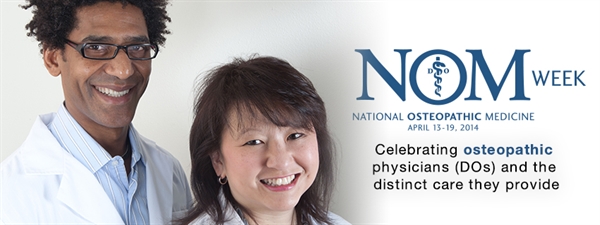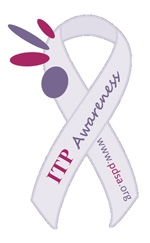National Osteopathic Medicine Month on September, 2025: Help! Please! My feature depends on it! Should I.?
September, 2025 is National Osteopathic Medicine Month 2025.
As an Amazon Associate I earn from qualifying purchases.

Jenny,
You've asked quite a few questions. Perhaps, I can answer a few,
"Are college credits that I earn with dual enrollent transferable to other colleges or are the credits only viable at the place where you got them? I actually want to attend a private college out of my state later on."
You'll need to identify the specific courses that you're referring to and directly contact the private college that you've targeted, in order to get the correct information in this case.
"I'm an aspiring doctor. If I were to take dual enrollment courses, which would you recommend for me to take?"
As far a recommending courses, I'll refer you to this link and let the professionals do that:
The common path to practicing as a physician requires 8 years of education beyond high school and 3 to 8 additional years of internship and residency. All States, the District of Columbia, and U.S. territories license physicians.
Education and training. Formal education and training requirements for physicians are among the most demanding of any occupation—4 years of undergraduate school, 4 years of medical school, and 3 to 8 years of internship and residency, depending on the specialty selected. A few medical schools offer combined undergraduate and medical school programs that last 6 or 7 years rather than the customary 8 years.
Premedical students must complete undergraduate work in physics, biology, mathematics, English, and inorganic and organic chemistry. Students also take courses in the humanities and the social sciences. Some students volunteer at local hospitals or clinics to gain practical experience in the health professions.
The minimum educational requirement for entry into medical school is 3 years of college; most applicants, however, have at least a bachelor's degree, and many have advanced degrees. In 2008, there were 129 medical schools accredited by the Liaison Committee on Medical Education (LCME). The LCME is the national accrediting body for M.D. medical education programs. The American Osteopathic Association accredits schools that award a D.O. degree; there were 25 schools accredited in 31 locations in 2008.
Acceptance to medical school is highly competitive. Most applicants must submit transcripts, scores from the Medical College Admission Test, and letters of recommendation. Schools also consider an applicant's character, personality, leadership qualities, and participation in extracurricular activities. Most schools require an interview with members of the admissions committee.
Students spend most of the first 2 years of medical school in laboratories and classrooms, taking courses such as anatomy, biochemistry, physiology, pharmacology, psychology, microbiology, pathology, medical ethics, and laws governing medicine. They also learn to take medical histories, examine patients, and diagnose illnesses. During their last 2 years, students work with patients under the supervision of experienced physicians in hospitals and clinics, learning acute, chronic, preventive, and rehabilitative care. Through rotations in internal medicine, family practice, obstetrics and gynecology, pediatrics, psychiatry, and surgery, they gain experience in the diagnosis and treatment of illness.
Following medical school, almost all M.D.s enter a residency—graduate medical education in a specialty that takes the form of paid on-the-job training, usually in a hospital. Most D.O.s serve a 12-month rotating internship after graduation and before entering a residency, which may last 2 to 6 years.
A physician's training is costly. According to the Association of American Medical Colleges, in 2007 85 percent of public medical school graduates and 86 percent of private medical school graduates were in debt for educational expenses.
Licensure and certification. To practice medicine as a physician, all States, the District of Columbia, and U.S. territories require licensing. All physicians and surgeons practicing in the United States must pass the United States Medical Licensing Examination (USMLE). To be eligible to take the USMLE in its entirety, physicians must graduate from an accredited medical school. Although physicians licensed in one State usually can get a license to practice in another without further examination, some States limit reciprocity. Graduates of foreign medical schools generally can qualify for licensure after passing an examination and completing a U.S. residency. For specific information on licensing in a given State, contact that State’s medical board.
M.D.s and D.O.s seeking board certification in a specialty may spend up to 7 years in residency training, depending on the specialty. A final examination immediately after residency or after 1 or 2 years of practice is also necessary for certification by a member board of the American Board of Medical Specialists (ABMS) or the American Osteopathic Association (AOA). The ABMS r

A guy becoming an anesthesiologist?
As has been suggested you are probably confusing Anesthesiologist (physician MD or DO) with Anesthetist (CRNA RN MSN) There are more female nurses (nursing is 97% female) thus more female nurse anesthetist. However, the percentage of male nurse anesthetist is higher than the percentage of males in nursing. In the US Army where there are 36% male nurses (instead of 3%) 64% of the nurse anesthetist are male.
Anesthesiologist are physicians and graduates of a allopathic (MD) or osteopathic medical school (DO).
Education for a nurse anesthetist is as follows:
Completion of a Bachelor of Science in Nursing (4-5 years college)
Pass the NCLEX-RN Board for licensure as a Registered Nurse
2 years experience in a critical care field of nursing (ICU, CCU, some schools will accept OR and ER)
Completion of a Master of Science in Nursing in Nurse Anesthesia (usually 28 months)
Pass the National Certification Board for Certified Registered Nurse Anesthetist
Education for an anesthesiologist is :
Bachelors degree with all neccessary prerequisites (heavy in sciences usually pre-med though other degrees are acceptable) (4-5 years)
Medical School (MD or DO) (4 years)
1 year rotating internship or 1 year of residency in accepted discipline of medicine.
3 year residency in Anesthesia
May take additional training/fellowships for specialization.
Current Salary Ranges in Los Angeles are as follows:
Nurse Anesthetist: $135,000 -$386,000
Anesthesiologist: $168,000 - $691,000

I want to become an anesthesiologist... What should i major in?
You can find more detailed info at these sites:
Anesthesiologists focus on the care of surgical patients and pain relief. Like other physicians, they evaluate and treat patients and direct the efforts of their staffs. Through continual monitoring and assessment, these critical care specialists are responsible for maintenance of the patient's vital life functions—heart rate, body temperature, blood pressure, breathing—during surgery. They also work outside of the operating room, providing pain relief in the intensive care unit, during labor and delivery, and for those who suffer from chronic pain. Anesthesiologists confer with other physicians and surgeons about appropriate treatments and procedures before, during, and after operations.
Training, Other Qualifications, and Advancement
The common path to practicing as a physician requires 8 years of education beyond high school and 3 to 8 additional years of internship and residency. All States, the District of Columbia, and U.S. territories license physicians.
Education and training. Formal education and training requirements for physicians are among the most demanding of any occupation—4 years of undergraduate school, 4 years of medical school, and 3 to 8 years of internship and residency, depending on the specialty selected. A few medical schools offer combined undergraduate and medical school programs that last 6 or 7 years rather than the customary 8 years.
Premedical students must complete undergraduate work in physics, biology, mathematics, English, and inorganic and organic chemistry. Students also take courses in the humanities and the social sciences. Some students volunteer at local hospitals or clinics to gain practical experience in the health professions.
The minimum educational requirement for entry into medical school is 3 years of college; most applicants, however, have at least a bachelor's degree, and many have advanced degrees. In 2008, there were 129 medical schools accredited by the Liaison Committee on Medical Education (LCME). The LCME is the national accrediting body for M.D. medical education programs. The American Osteopathic Association accredits schools that award a D.O. degree; there were 25 schools accredited in 31 locations in 2008.
Acceptance to medical school is highly competitive. Most applicants must submit transcripts, scores from the Medical College Admission Test, and letters of recommendation. Schools also consider an applicant's character, personality, leadership qualities, and participation in extracurricular activities. Most schools require an interview with members of the admissions committee.
Students spend most of the first 2 years of medical school in laboratories and classrooms, taking courses such as anatomy, biochemistry, physiology, pharmacology, psychology, microbiology, pathology, medical ethics, and laws governing medicine. They also learn to take medical histories, examine patients, and diagnose illnesses. During their last 2 years, students work with patients under the supervision of experienced physicians in hospitals and clinics, learning acute, chronic, preventive, and rehabilitative care. Through rotations in internal medicine, family practice, obstetrics and gynecology, pediatrics, psychiatry, and surgery, they gain experience in the diagnosis and treatment of illness.
Following medical school, almost all M.D.s enter a residency—graduate medical education in a specialty that takes the form of paid on-the-job training, usually in a hospital. Most D.O.s serve a 12-month rotating internship after graduation and before entering a residency, which may last 2 to 6 years.
A physician's training is costly. According to the Association of American Medical Colleges, in 2007 85 percent of public medical school graduates and 86 percent of private medical school graduates were in debt for educational expenses.


















